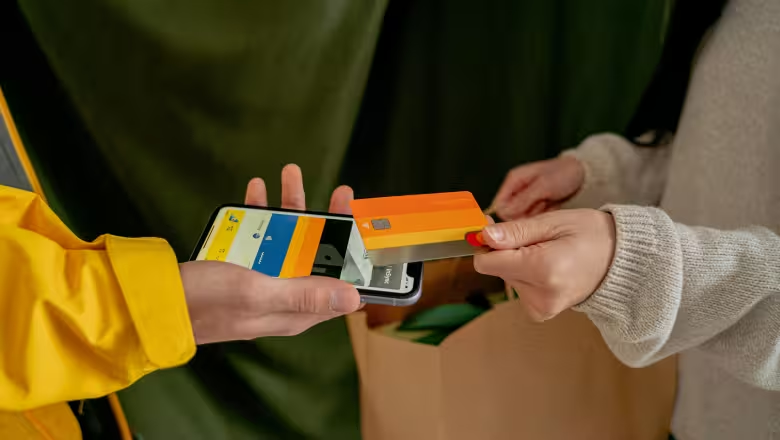도입이 처음이신가요?
ORBRO 전문가가 직접 상황을 분석하고
최적의 솔루션을 제안해드립니다.

Location Tracking and Security: Solutions for Businesses

In the context of digital transformation and increasingly fierce competition, businesses must not onlfy focus on optimizing production but also ensure security and safety for assets, employees, and operational processes. Location Tracking has emerged as a critical key, enabling businesses to monitor accurately, protect assets, enhance operational efficiency, and minimize security risks. This article clarifies the concept of location tracking, analyzes its connection to security, and proposes suitable solutions for businesses.
1. What is Location Tracking?
The Basic Concept of Location Tracking
Location Tracking is the process of determining the spatial coordinates or position of an object (vehicle, equipment, person, or product) in real-time or near real-time. Data obtained from location tracking may include latitude, longitude, altitude, speed, direction of movement, and more, allowing businesses to monitor, manage, and make timely decisions.
2. Types of Location Tracking Technologies
To implement location tracking, businesses can choose or combine various technologies based on the environment (outdoor or indoor), tracking range, cost, and purpose.
Real-Time Location System (RTLS)
RTLS: Combines technologies like UWB (Ultra-Wideband), Wi-Fi, and BLE (Bluetooth Low Energy) to quickly determine an object’s position within a limited range, typically indoors or in factories.
UWB: High precision (±10–30 cm), ideal for factories, warehouses, and hospitals.
BLE/Wi-Fi: More cost-effective than UWB, with accuracy of about 1–3 meters, suitable for offices, retail, and supply chains.
Global Positioning (GPS/GNSS)
GPS (Global Positioning System): A global positioning system using a satellite network, offering 3–5 meters of accuracy outdoors.
GNSS (Global Navigation Satellite System): Includes GPS (USA), GLONASS (Russia), Galileo (EU), and BeiDou (China). GNSS combines multiple satellite systems to enhance accuracy, coverage, and redundancy during signal loss.
Advantages: Global coverage, high outdoor accuracy.
Disadvantages: Limited in obstructed environments like high-rise buildings or enclosed warehouses, with relatively high energy consumption in mobile or dedicated GPS devices.
Indoor Positioning
Wi-Fi Positioning: Relies on signal strength (RSSI) from access points (APs). Narrow range, with accuracy of about 3–5 meters.
BLE Beacon: Beacons emit identifying signals, and handheld devices or BLE receivers detect them to determine position. Accuracy is ~1–2 meters.
RFID: Passive or semi-passive RFID tags attached to assets allow RFID readers to detect proximity. For HF/UHF RFID, the range is ~0.5–5 meters.
3. The Relationship Between Location Tracking and Business Security
Location Tracking Enhances Physical Security
When objects (employees, vehicles, assets) are equipped with tracking devices, a centralized monitoring system (dashboard) displays their real-time positions. If unplanned movements occur (e.g., a transport vehicle deviates from its route or an employee leaves a secure area), the system instantly alerts the security team, enabling rapid response to prevent theft, attacks, or unauthorized access.
Protecting Assets and Employees Through Location Monitoring
Assets: High-value items like machinery, tech equipment, and expensive goods can be tagged with RFID, BLE, or GPS devices for continuous tracking. Any abnormal movement is recorded and flagged.
Employees: In hazardous environments (chemical plants, mines, high-rises, military zones), employees with tracking devices can be precisely located, ensuring timely support or rescue in emergencies.
Minimizing Loss and Theft Risks
When goods, tools, or equipment enter or exit restricted areas, location tracking systems, combined with sensors (door sensors, geofences), can automatically lock gates, disable vehicles, or sound alarms. This enables businesses to quickly isolate issues and prevent asset loss.
4. Location Tracking Solutions for Businesses
GPS/GNSS Solutions for Fleets and Logistics
Mobile GPS devices attached to trucks, containers, or taxis help businesses manage routes, speeds, and stop times.
Fleet Management Systems aggregate GPS data to generate reports on operational efficiency, fuel costs, and safe routes.
Security Application: If a vehicle deviates from its route or is stolen, the system instantly alerts the control room and can remotely disable the engine.
RTLS (Real-Time Location System) for Asset and Equipment Monitoring
UWB-RTLS: UWB tags are attached to assets, employees, or equipment, with anchors (signal transceivers) installed appropriately. The system analyzes time-of-flight differences to pinpoint exact coordinates.
Wi-Fi-RTLS or BLE-RTLS: Leverages existing Wi-Fi/BLE infrastructure in factories or warehouses. Less accurate than UWB but cost-effective and scalable.
RFID and BLE Applications for Warehousing and Manufacturing
RFID UHF: Attached to pallets, shipments, or component containers, with RFID readers at warehouse entrances or conveyors to automatically log incoming/outgoing items.
BLE Beacon: Compact beacons on tool pallets or forklifts, paired with handheld BLE scanners, enable proximity tracking (1–3 meters) in warehouse areas.
Video Surveillance Systems Integrated with Location Tracking
Smart IP Cameras with AI and Video Analytics: When cameras detect people or vehicles, the system extracts images and provides preliminary positioning based on camera coordinates.
LiDAR + Camera: In automated warehouses, transport robots (AGVs/AMRs) equipped with LiDAR and cameras, combined with RTLS, self-locate and avoid collisions, while alerting to unidentified objects.
5. Benefits of Implementing Location Tracking with Security
Enhancing Operational Efficiency and Cost Savings
Reduced Search Time: Accurate location data helps employees quickly find assets or equipment in warehouses or factories.
Optimized Routes and Fuel Savings: For fleets, GPS data analysis calculates the shortest routes, minimizing travel distance and fuel costs.
Reduced Manual Labor: RFID/RTLS automates warehouse inventory, cutting staff needs and human errors.
Improving Safety and Minimizing Loss Risks
Early Issue Detection: Alerts for abnormal asset movement or unauthorized entry into restricted areas enable proactive measures.
Emergency Response: In dangerous situations (fires, theft, workplace accidents), location tracking reveals the last known positions of people and assets, shortening response times.
Enhancing Customer and Employee Experience
Customers: GPS tracking allows customers to monitor delivery locations in real-time, fostering transparency, trust, and satisfaction.
Employees: Internal location tracking helps staff locate partners, colleagues, or needed equipment, reducing wait times and boosting work efficiency.
Data Analysis for Process Optimization and Decision-Making
Location Reports: Statistics on movement history, stop times, warehouse door openings, and equipment interactions provide a comprehensive view of production and logistics.
Behavioral Analysis: Location data helps analyze work habits and process weaknesses, refining SOPs (Standard Operating Procedures) for higher productivity.
6. Conclusion
In today’s business landscape, location tracking is not just a technological solution but a vital part of security and operational strategies. From tracking fleets and monitoring assets to protecting employees in hazardous environments, location tracking, combined with modern security systems, empowers businesses to proactively address risks, boost performance, and optimize costs.
While challenges like cost, integration, and security persist, a well-structured strategy can deliver high effectiveness, process innovation, and competitive advantages. In the 4.0 era, deploying smart location tracking and security solutions is a pivotal step for businesses to break through and achieve sustainable growth.
공유하기






